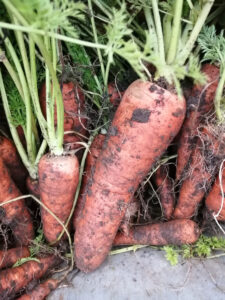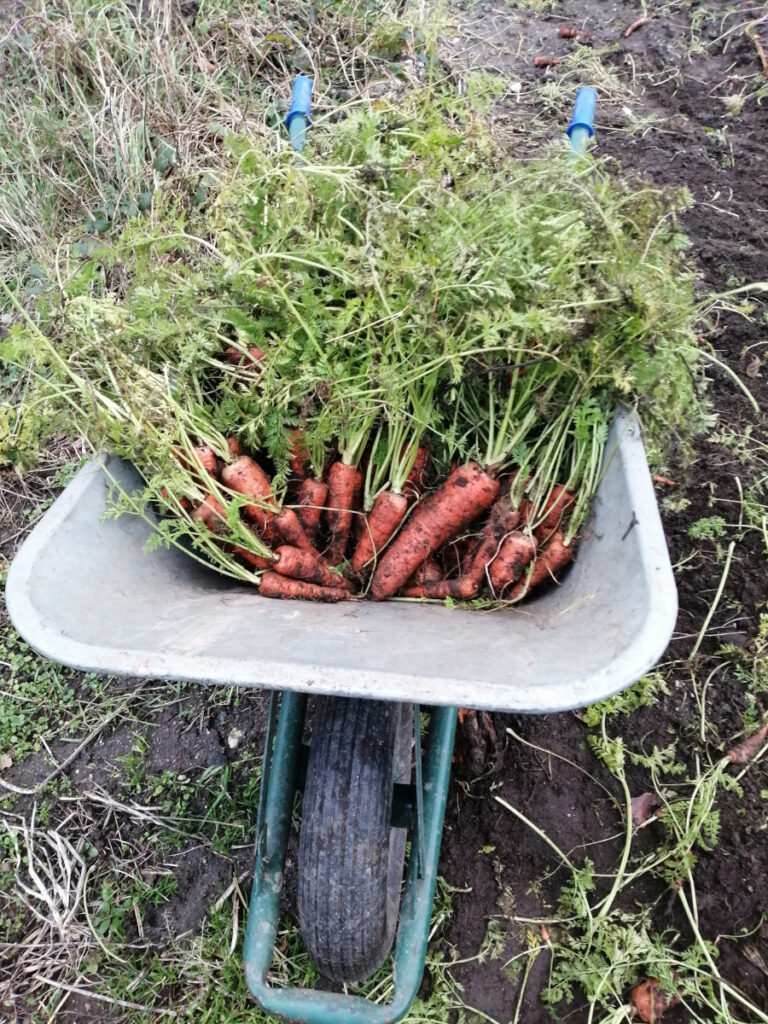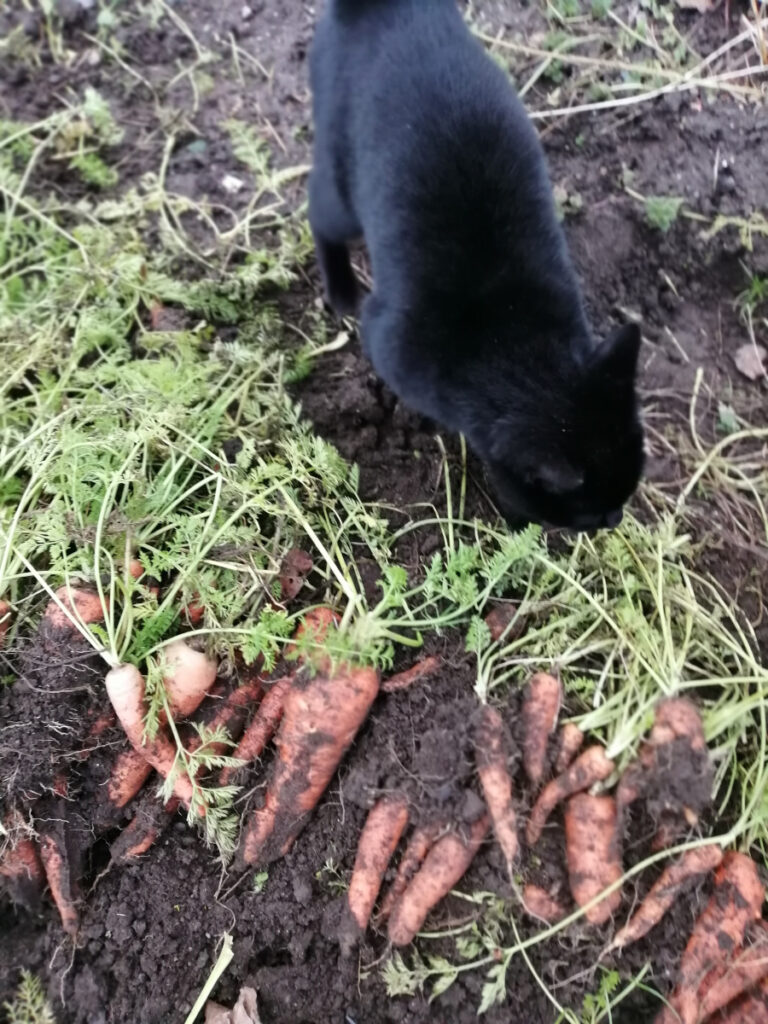
The world is reflected in the story of a carrot because it represents how we make choices.
It all starts in spring: We plant, water, weed, wait. They grow. We harvest, wash, bunch together, take to the shop, or to friends. Feedback is amazing!
“They taste so… carrot-y!”
“They’re delicious! This is how food should be!”
“They’re so different from the shop carrots!”
“Shop local” has become a popular battle cry in Ireland, to save the village shop, the nation’s economy, the local craftspeople, the world. We’re delighted!
Yet organic vegetables can be a tough sell, even at the same price as factory carrots, even though they were still in the ground that morning. A bit ruddier, muddier, than their industrial cousins. Hierloom varieties are untrusted – we’re not used to seeing a deep purple carrot or a yellow one, which is assumed to be a parsnip mixed up with the carrots, but they are original and taste delightful!
I sympathise. There was a time when I was strongly resistant to the dirt, bother, inconvenience of the organic vegetable. As my taste buds adjusted though, I began to feel let down by the shops’ offerings. First, I noticed the watery tomatoes. Some supermarket vegetables are fine – mild ones like zucchini or cabbage. But even potatoes can be tasteless compared to the different varieties available from the garden – the rich, dense deep purple Violettas, delicately waxy Lady’s Fingers, the fluff of a King Edward, and always reliable Mira sarpo.
Variety is the spice of life! And different coloured fruit and vegetables are a sign of different vitamins and minerals, so variety in colour is a signpost of healthy food, well-being, wellness, good health.
Food waste has been prominent in the media. We learned that over 60% of industrial carrots don’t make it out of the field, they’re not perfect enough for the shop, in spite of all the herbicides and pesticides applied. They go to waste. Because we operate an organic system in our garden, none of ours are wasted: If not good enough for the shop, we eat or share. What we don’t sell, we boil, juice, roast, fry, or grate into salads. And the composted ones go back into the soil the next year.
Our carrots are the same € / kg as the industrial ones at the big supermarkets, but you won’t find the same taste – sometimes even organic labelled don’t quite match the flavour because they are from an industrial organic process. They are often shipped from another country. And they are inevitably packaged in plastic.
Plastic itself has become an enormous problem for the globe. Made from fossil fuels and therefore driven by that industry’s profit motive, plastic is choking our oceans and waterways and piling up into non-compostable mountains in developing countries. There is a lot to this shocking story and we recommend watching the film StoryofPlastic.org.
Awareness of all these issues is growing fast thanks to both high profile individuals and grass-roots community groups talking about the causes of climate change, wealth inequality and pollution. Food is one of the major drivers of these global issues. You can make a valuable positive difference to your own health, your enjoyment of life and the Earth by what you put on your plate.
So, bon apetit! We hope you can get your hands on the best of the best when it comes to your vegetables this year. Check out Michael MacAssey’s butcher shop in Ballon and Ward’s Grocer in Tullow and ask for Ballin Temple carrots. We’re sure you’ll be happier and healthier for it!
Wishing you a happy, healthy, tasty new year!
Pam & Tom
You might also like:




Comments